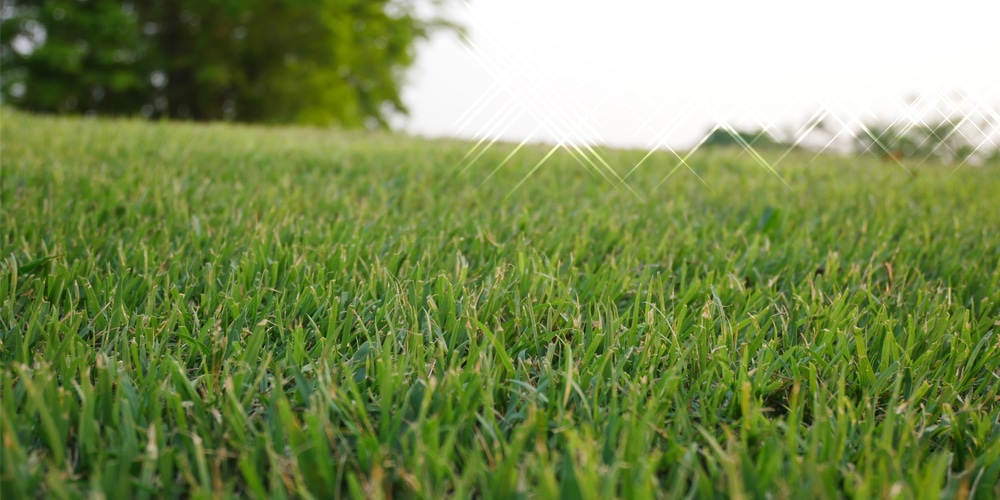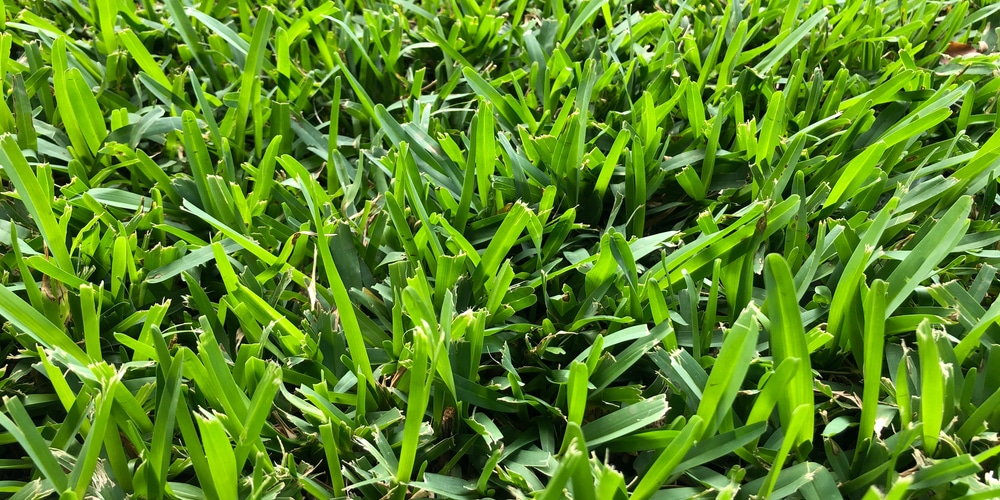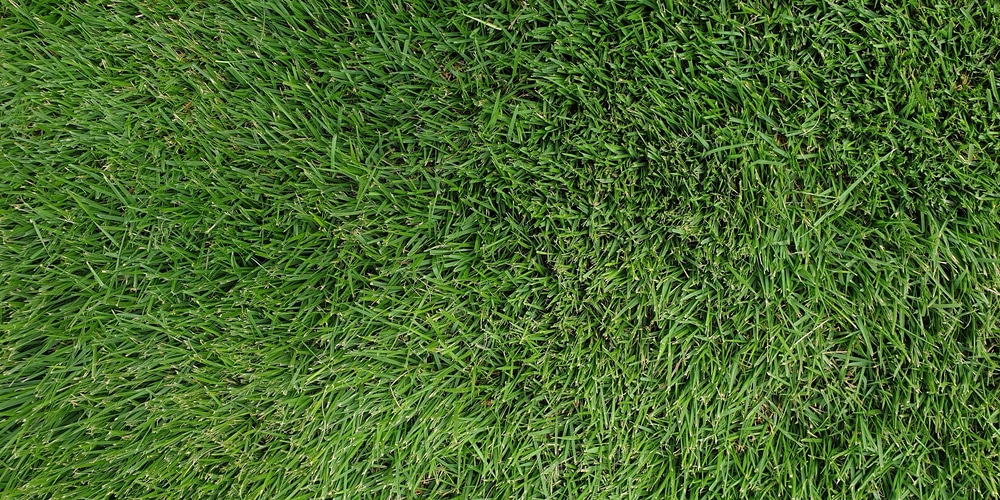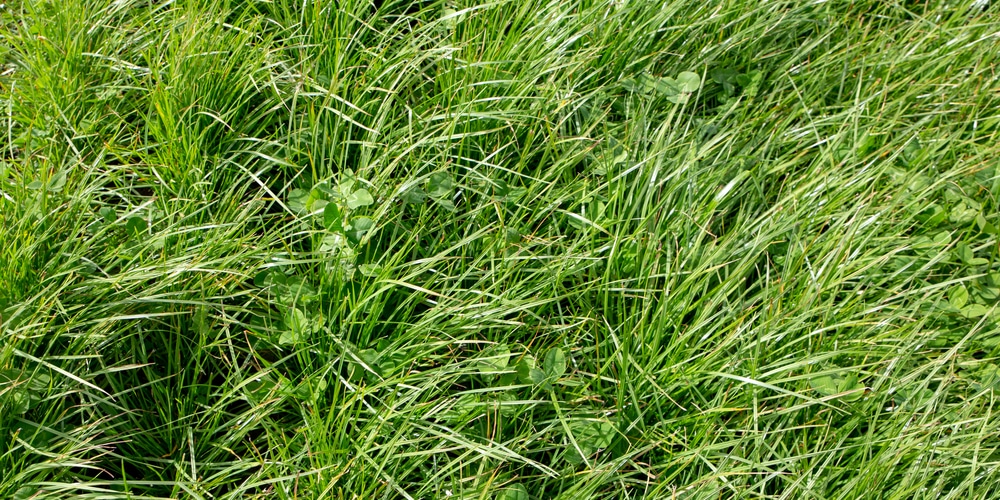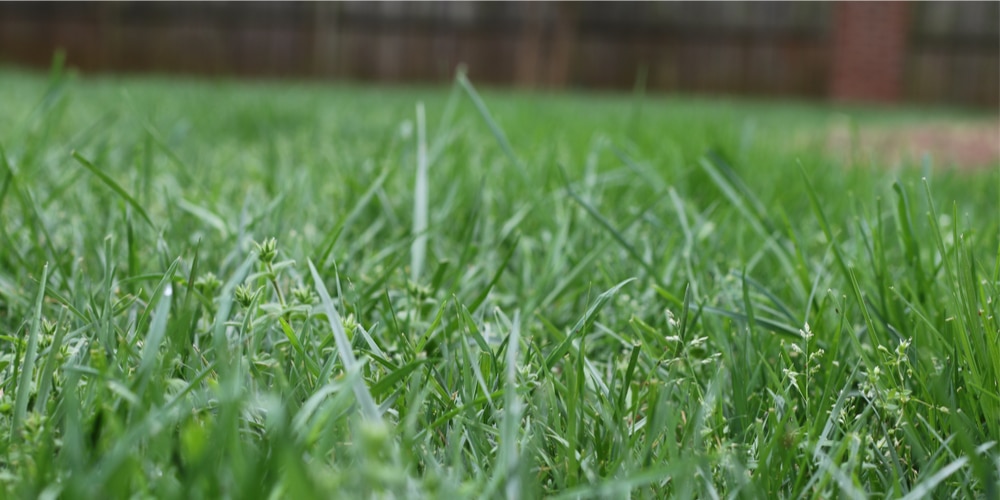If you’re looking to create a beautiful green lawn, it’s essential to consider your options carefully. There are many different grass varieties, so you’ll need to choose one that’s right for the climate in the state you live in. You should also consider whether to use grass seed or lay new sod.
If you decide to plant grass seed, you’ll need to grow it at the correct time of year to ensure your lawn becomes well established and thrives. Let’s look at the best time of year to plant grass seed.
It’s crucial to plant grass at the correct time of year to avoid the extremes of temperature. You don’t want to plant grass seeds if it’s very hot or cold as your lawn will be unlikely to grow well. Lawns planted at the wrong time of year generally end up unhealthy and patchy, as the grass seedlings are battling the elements.
To work out the best time of year to plant grass, you’ll need to decide which variety of grass seeds to plant. There are two different types of grass; warm-season greases and cool-season grasses. Use the chart below to see what zone you live in:
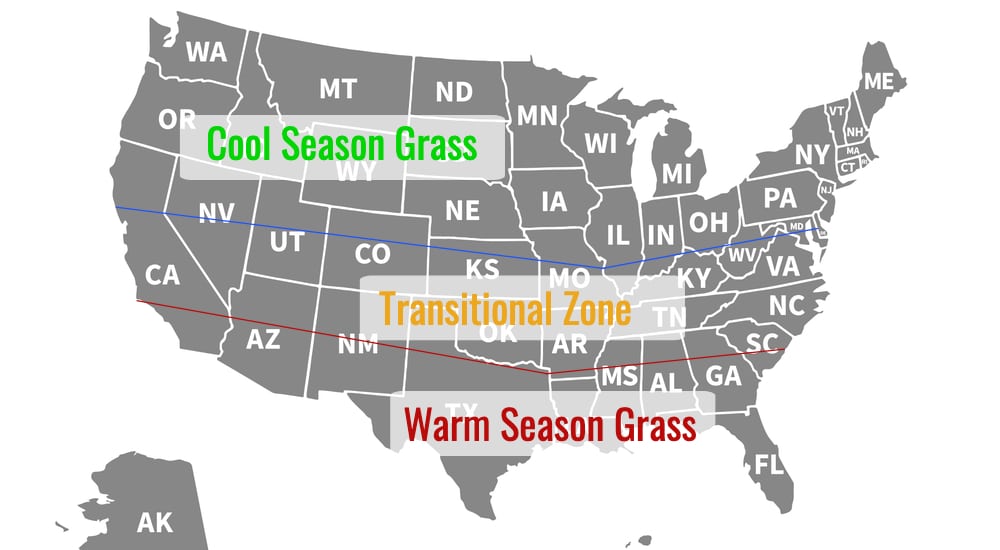
Best Time of Year to Plant Warm-Season Grasses
Warm-season grass varieties thrive in states that have an average temperature of are between 70 and 90 degrees. These grass species are widespread in southwestern states and are used in lawns, parks, schoolyards, and sporting fields.
When the weather is very cold during the winter months, warm-season grasses become dormant and turn brown. They die back and won’t start growing again until the early spring when the weather gets better.
It’s best to plant your lawn in the spring to give the grass a chance to establish itself before the weather gets too hot. This is particularly important if you live in a state with scorching summers. Avoid planting warm-season grasses in the winter as the seeds are unlikely to germinate. Some varieties of warm-season grass seeds will be able to lay dormant and then grow in the spring, but this isn’t the case for all seeds. To avoid wasting your money and having to replant your lawn, it’s best to wait until the spring to plant warm-season grasses.
Here are some common warm-season grasses which can be planted in the late spring and early summer.
Bermuda
The most common type of warm-season grass is Bermuda, as it’s a robust grass that looks great and has a high traffic tolerance. This variety of grass is very fast growing and is drought resistant. It’s generally grown in the southern states and requires full sun and well-drained soil. Bermuda is often used on golf courses due to it’s robust nature.
St. Augustine grass
St. Augustine is another popular warm-season grass that’s great for lawns in the Southern States. It’s risen in popularity in recent years as it’s very heat resistant and able to cope with the hot climate. This variety of grass is also excellent at combating weeds and other kinds of grass that attempt to grow amongst it as it’s very dense.
The downside to St Augustine grass is that it’s not as good as Bermuda grass for high traffic areas. This variety can quickly become patchy if you constantly have kids or pets running around and playing on your lawn. If that happens though, reviving St Augustine is not that hard.
Zoysia
Zoysia is a warm-season grass that can withstand colder winters than other varieties. It’s commonly grown in the southern states, as well as in some of the transition zone. This grass likes full sun or partially shaded areas and can cope with high levels of traffic.
Best Time of Year to Plant Cool-Season Grasses
Cool-season grasses also grow well and are common in northern states and states in the transition zone. They thrive in climates with cooler weather and do not fare well in the scorching heat. If you live in an environment with a temperature between 60 and 75 degrees, it’s best to plant your lawn with cool-season grasses.
Cool-season grasses stay green year-round and don’t go dormant in the winter. Their growth does slow down slightly in the summer months when it’s warmer. Their growing season is during the fall and winter when the weather is colder.
Here are some examples of cool-season grass varieties which are best planted in the fall. However, if you’ve missed fall planting, you can plant your grass seeds in the early spring when the weather is still cool. This will allow the seeds to germinate and establish themselves before the weather gets too hot.
Ryegrass and tall fescue are some of the most common cool-season grasses. Here’s our full guide to ryegrass vs fescue. It can really help you determine which one is right for your yard.
Kentucky Bluegrass
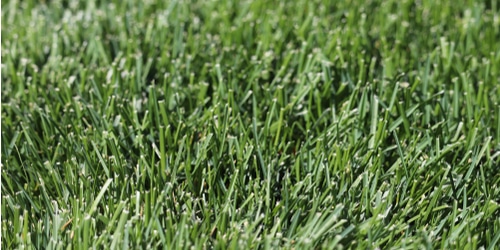
Kentucky Bluegrass is an example of a cool-season grass, which can withstand harsh winters. Some varieties are also able to cope with hotter weather which makes them perfect for the transitional zone.
This variety of grass likes full sun and isn’t very shade tolerant. It can also become very patchy if grown in a high-traffic area.
Ryegrass
Ryegrass is another example of a cool-season grass that is popular in the northern states. It’s very tolerant to the cold and grows reasonably well in areas that are shaded or in partial shade.
Ryegrass grows very quickly and also has a fast germination rate, making it perfect for those who want to establish a lawn quickly.
Tall Fescue
Tall fescue is a cool-season grass that is excellent for the transition zone as well as northern states. It’s fast-growing and likes full sun or partial shade. It can also cope with high traffic and stays green year-round.
The Transition Zone
The transition zone extends across the middle of America. It spans the country from the west coast to the east. In this area, both warm-season and cool-season grasses can be grown. States in this area have a mixed climate, and grasses such as Zoysia or Centipede grass can withstand the hot weather and colder nights and winters in the transition zone.
Conclusion
The best time of year to plant grass seeds depends on what variety of grass you’re planting, and where you live. Warm-season grasses such as Bermuda can be planted in the late spring or early summer when the weather is warm but not too hot. Warm-season grasses are generally grown in the southern states.
If you live in the northern states, you’ll want to plant cool-season grass such as fescue, which is best planted in the fall. However, if you miss this planting time, your lawn will also thrive if the seeds are planted in early spring while the weather’s still cool.
